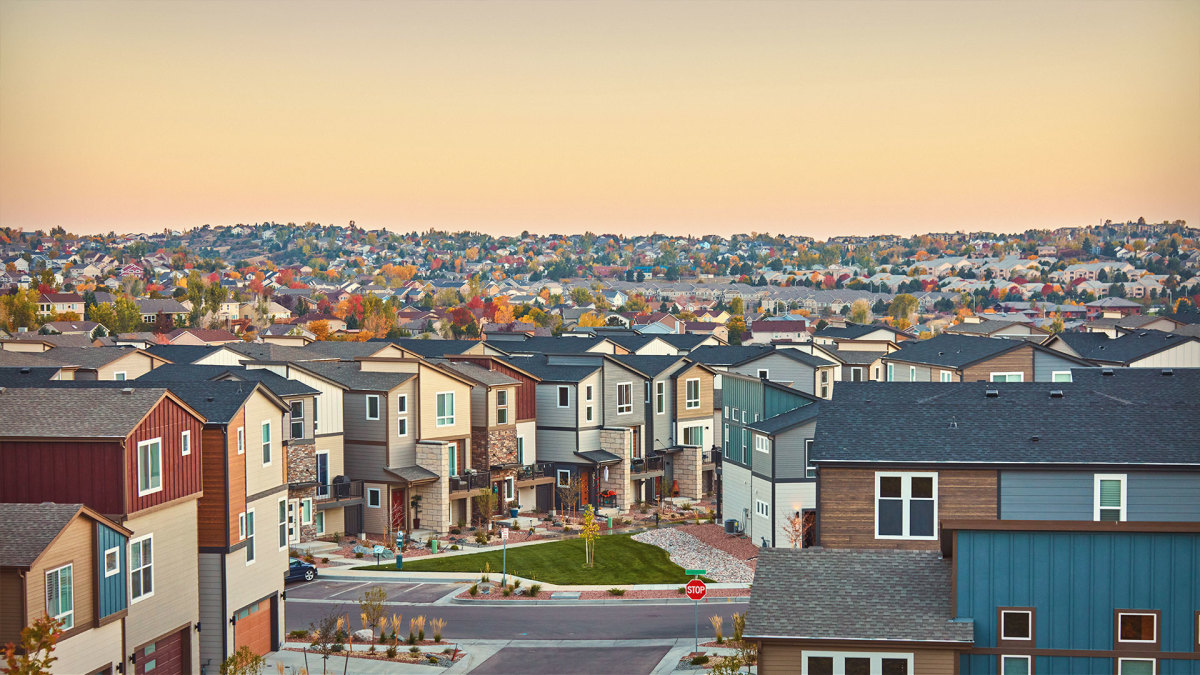It looks like the tide might be gradually starting to turn for the housing market.
The S&P CoreLogic Case-Shiller Home Price Index dipped 0.3% in July from June, the largest monthly decline since November 2014.
To be sure, prices soared 15.8% in the 12 months through July, but that’s still a slowdown from 18.1% in the 12 months through June. The 2.3 percentage-point difference is the largest deceleration in the index’ history going back to the 1980s.
“Although U.S. housing prices remain substantially above their year-ago levels, July’s report reflects a forceful deceleration,” Craig Lazzara, managing director at S&P DJI, said in a statement.
“As the Federal Reserve continues to move interest rates upward, mortgage financing has become more expensive, a process that continues to this day.”
Mortgage rates have soared this year, which could be suppressing housing demand, pushing prices for homes lower. The 30-year fixed mortgage rate averaged 6.29% in the week ended Sept. 22.
Home buyers with a $3,000 monthly budget can afford a $479,750 home at 6% mortgage rates, down from a $621,000 home a year ago, when 3% mortgage rates prevailed, according to real estate brokerage Redfin.
“Given the prospects for a more challenging macroeconomic environment, home prices may well continue to decelerate,” Lazarra said.
Getty Images
New Home SalesMeanwhile, sales of new single‐family homes soared 29% in August from July, registering the highest total since 2008. But it was down 0.1% from August 2021, according to government data.
The new home price trend is similar to the Case-Shiller report. The median sale price of a new home slid 6.3% in August to $436,800 from $466,300 in July.
Selling prices registered a year-on-year increase of 8% in August, the first-single digit increase since mid-2021, and a slowdown from 14.9% in July.
Just like home prices, rents have started to descend too.
The median asking rent for zero- to two-bedroom properties dipped 0.6%, or $10, to $1,771 in August from July, according to Realtor.com. That’s the first decline for the Top 50 cities since November.
It’s “perhaps a sign that more typical seasonal cooling is returning to the rental market, like we’ve seen in recent for-sale data,” wrote Realtor.com economists Jiayi Xu and Danielle Hale.
Peak Rents?But this also could indicate rents have peaked, as the Federal Reserve’s interest-rate hikes begin to put a dent in the economy.
To be sure, rents still rose 9.8% in the 12 months through August. But that was the first time the increase was in single digits since July 2021.
In any case, “real affordability challenges persist, as inflation continues to outpace annual wage growth, evaporating real gains employees might see from an otherwise strong labor market,” the Realtor.com economists said.
Consumer prices jumped 8.3% in the 12 months through August, while average hourly wages gained 5.2%.
Getting back to the issue of home-buying, if the Fed puts a major dent in the economy with its interest-rate hikes, that along with surging mortgage rates may push home prices down substantially.
